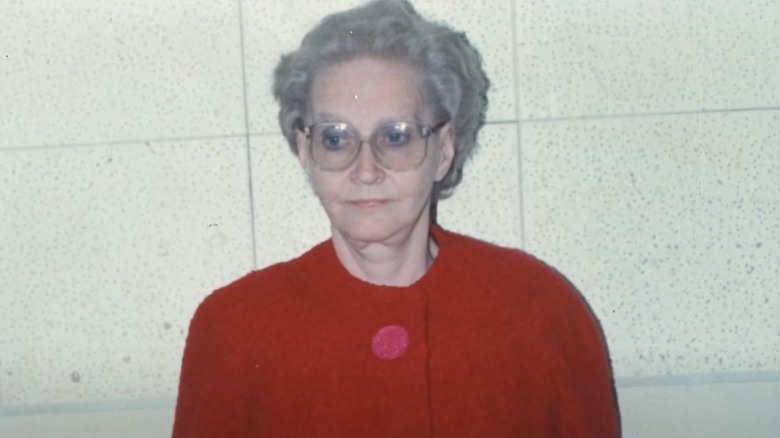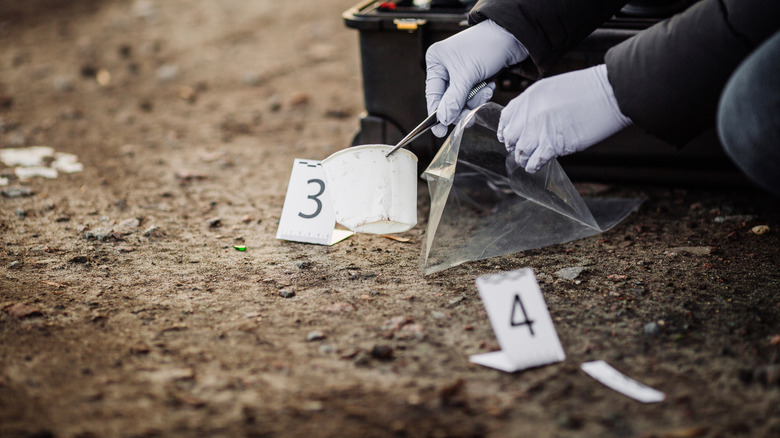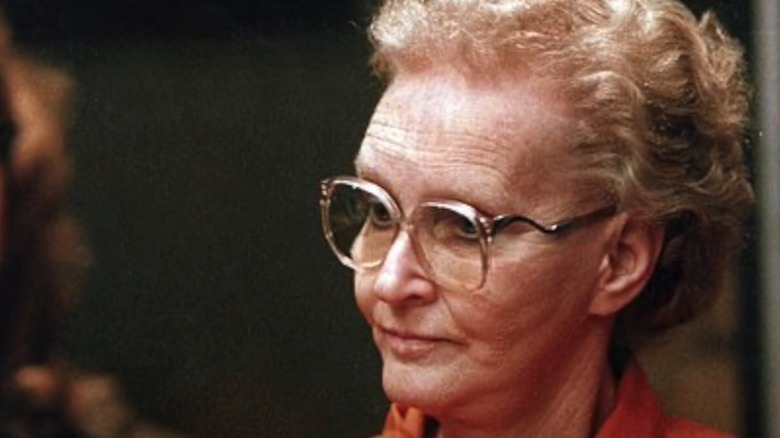What Happened To Dorothea Puente's Victim Dorothy Miller?
Dorothea Puente was an old lady who ran a boarding house at 1426 F Street in Sacramento, California. In 1988, authorities were conducting a welfare check for one of Puente's tenants when they made a horrific discovery. The bodies of seven of Puente's missing tenants were found buried in the yard, and one of them was Dorothy Miller.
Puente opened her home to drug addicts, recovering alcoholics, senior citizens, and those who had mental illnesses, and for that, she was respected in the community, as reported by ATI. When dead bodies were found in her yard, those who knew the seemingly harmless lady were shocked to know that she was a cold-blooded killer. Not many people knew that Puente had a shady past that involved a prison stint. It was the persistence of a social worker that finally revealed what happened to Puente's missing tenants and the horrible crimes that she committed.
Dorothea Puente's past
Dorothea Puente was born in Redlands, California in 1929. She had a difficult childhood, as her parents died when she was just a young girl, and she was separated from her siblings and sent to live in different homes. By 16 years old, Puente had turned to sex work to make ends meet, according to World History. In the late 1940s, Puente started stealing and forging checks, and she spent some time in jail for her crimes.
Puente was headed down a dark path, and forging checks and stealing escalated to murder. By running a boarding house and providing a home for those in need, Puente seemed like she had a heart of gold. However, she had ulterior motives. She killed her borders and cashed in their Social Security checks, and her illicit activities continued until Alvaro Montoya, also known as Bert, went missing in 1988. As reported by the Los Angeles Times, a social worker called Puente to check on Montoya, but the landlady said that Montoya left the boarding house and had gone to Mexico. Puente provided different explanations whenever the social worker called, and this aroused suspicions.
The discovery of the bodies
Authorities went to Dorothea Puente's boarding house, but the initial visit didn't yield results. There was nothing suspicious at first glance, and the tenants said that they were treated well. However, as the police were about to leave, one tenant was able to give them a message inconspicuously by slipping them a piece of paper that had the message, "She's making me lie for her" (via ATI). This prompted further investigation, and the police returned to Puente's home and asked for her permission to dig in the yard.
The police started digging, and they discovered the bodies of unidentified victims. It took a few days of digging, and in the end, they uncovered seven dead bodies — all of them eventually identified as Puente's tenants who had gone missing. In addition to the seven victims, Puente was also connected to two other suspicious deaths, as reported by the New York Post. With the discovery of the bodies at the boarding house, Puente became the subject of news reports, and everyone was shocked to learn the old lady's secret.
Who was Dorothy Miller?
Dorothy Miller was one of Dorothea Puente's tenants, and she was last seen in October 1987, according to Screenrant. Miller was a 64-year-old American-Indian Army veteran, and reports noted that she had a drinking problem. She was sitting on the porch of the boarding house having a cigarette when her social worker last saw her. Most of the tenants who lived at Puente's house were called "shadow people" — those who were homeless or didn't have family or friends who would notice them missing — and Miller was one of them.
Miller was one of the seven bodies discovered in the yard of the boarding house, and her body was badly decomposed. She was found with her arms bound with duct tape to her chest. As reported by Murderpedia, Puente used Miller's veteran identification card to obtain a prescription for the drug Dalmane — a type of medication that is used to treat insomnia. Per the Los Angeles Times, toxicology tests showed that the bodies found in the yard had traces of the drug, and prosecutors believe that Puente heavily drugged her tenants before killing them. A search of the house uncovered a list written by Puente, which consisted of the names of her tenants and dollar amounts, which were said to be the amount of money she got for cashing in the Social Security checks of her victims.
The trial and conviction
Dorothea Puente was charged with nine counts of murder, and the prosecution described the landlady as a callous woman who killed her tenants in order to collect Social Security checks. The defense, on the other hand, argued that the tenants died of old age or suicide, and Puente buried the bodies to avoid issues with her parole officer. At the time of her arrest, Puente was on parole for prior offenses. According to The Washington Post, the jury deliberated for 24 days.
Puente was convicted of first-degree murder in the deaths of Benjamin Fink and Dorothy Miller, and second-degree murder in the death of Leona Carpenter. The remaining six charges resulted in a mistrial, as the jury could not reach a unanimous decision and was deadlocked, per The New York Times. Puente maintained her innocence throughout her trial, and when her verdict was read, she said, "I didn't kill anyone."
Sentence and death
In the mid-'80s, Dorothea Puente was evaluated by a psychologist who diagnosed her as a schizophrenic, and a psychiatrist also said that she had antisocial personality disorder, which is characterized by deceiving people for personal gain, disregard for right and wrong, and lack of remorse for harming people (via Mayo Clinic). Puente was sentenced to life in prison without the possibility of parole on December 10, 1993, and she was incarcerated at the Central California Women's Facility.
Puente was interviewed a few times during her time in prison, and she always insisted that she was innocent and her tenants died of natural causes. In an interview with Martin Kuz for Sactown Magazine, she stated that she wished to die peacefully in her sleep. When asked what it was like to be called a murderer, she answered, "I don't give a s*** what anyone else thinks." She never admitted to her crimes, and she died of natural causes on March 27, 2011, at the age of 82, as reported by Murderpedia.





